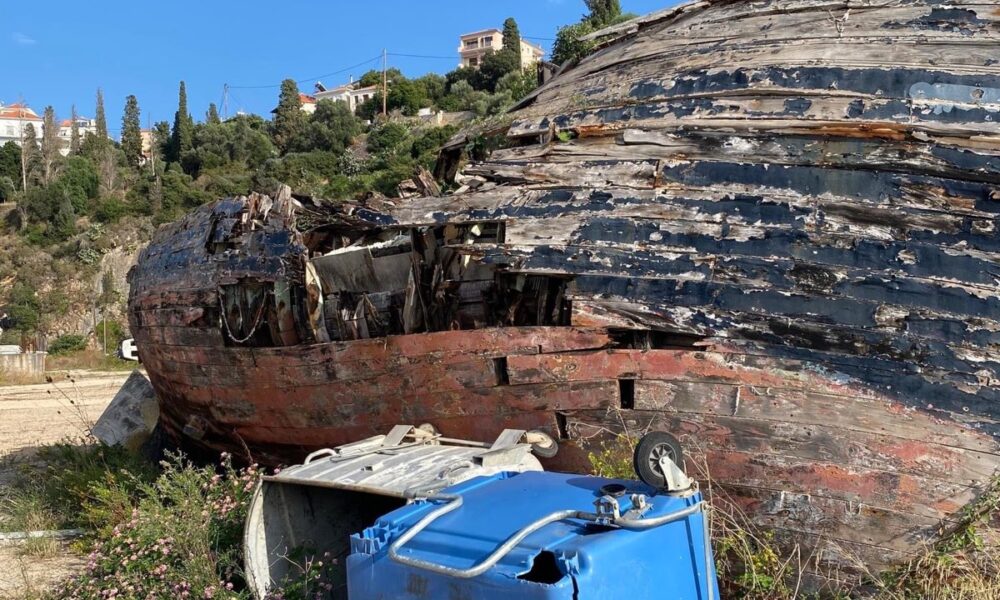
Ghost harbor on the brink of dissolution?
36° 55’ 08.0000’’ N, 21° 41’ 95.0000’’ E
We’ve heard in advance that Pilos Marina on the Peloponnese is a ghost harbor without supervision, on the verge of chaos and dissolution.
“Don’t sail in there,” several sailors write on the digital bulletin board, Navily.
Therefore, we are highly curious as we sail into the marina, which turns out to be full of boats – regular boats, abandoned boats, and a few pure wrecks. Everyone loves it when a marina is free, even if there is no electricity, water, or harbor master.
Some have spray-painted “private” on the quayside, while others have marked with chains and ropes that strangers should stay away. On a long outer pier, some boats have positioned themselves lengthwise and entangled themselves so thoroughly in three or four mooring lines that no one can dock alongside them.
Sailors warn on Navily about individuals posing as harbor masters and collecting harbor fees. “Don’t pay. They are pirates,” they write.
It resembles a harbor we’ve encountered a couple of times before in Greece. Harbors that were built with EU funds, but where the developer then can’t reach an agreement with the local authorities on an operating agreement, and therefore the harbor falls into disrepair.
Following the advice of a British sailor, we moor at the end of a pier right at the entrance to the harbor. After all, we’re only going to be here for one night. And Pilos is, by the way, a beautiful town.
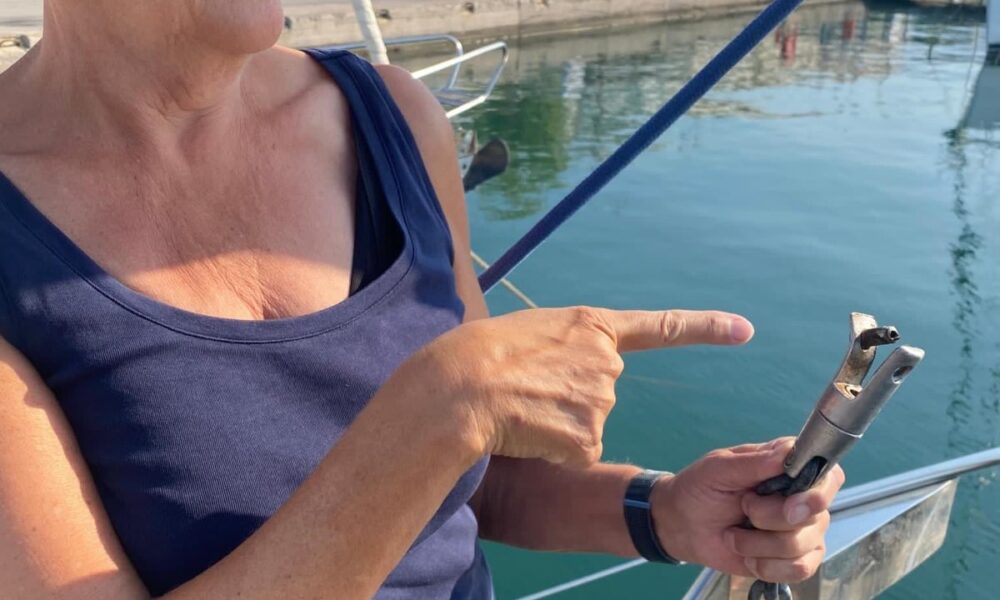
Oops, where is my anchor??
37° 01′ 42.0000” N, 22° 6′ 33.0000” E
The skipper’s wife got a surprise when she tried to hoist up Ronja’s anchor the other day.
Up came the chain. But no anchor.
Darn it.
Decades apparently wore down a connecting link between the anchor and the chain, and since the anchor was stuck behind a piece of rock on the seabed, it was the end of the relationship between anchor and chain.
If we didn’t know it before, we certainly know it now: An anchor is absolutely indispensable.
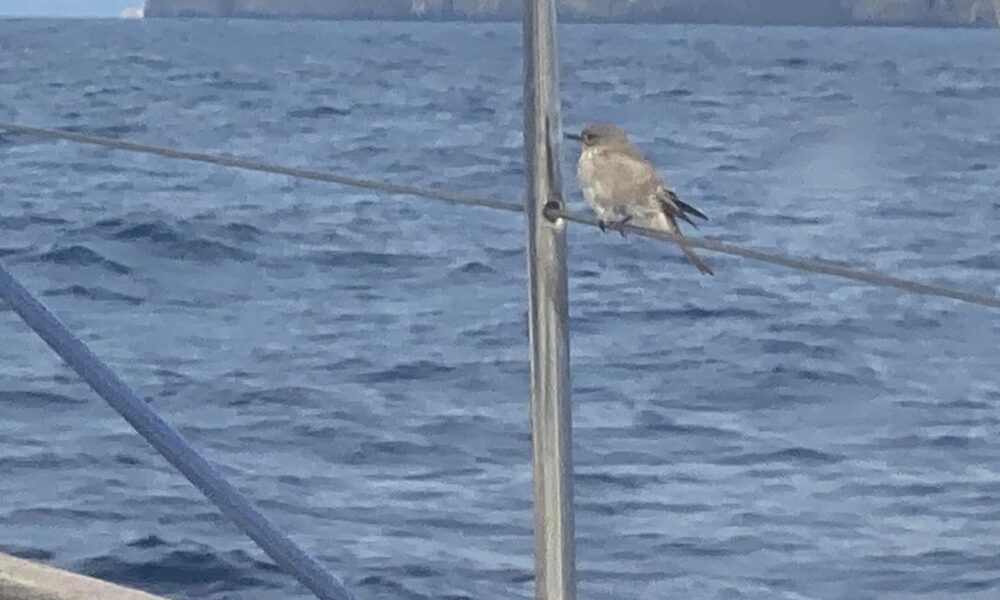
Stowaway on Ronja
36° 8’ 35’’ N, 22° 59’ 55’’ E
Stowaway on Ronja
We haven’t encountered boat refugees yet.
But a bedraggled little sparrow landed on Ronja’s deck today during a rain shower. The sparrow was drenched by rain and saltwater. It huddled, tried to get accustomed to a boat’s movements in high seas, and called – according to the skipper’s wife – for its mother.
After seven hours of sailing, we reached the island of Khytera, and the sparrow flew on in life with a farewell and thanks.
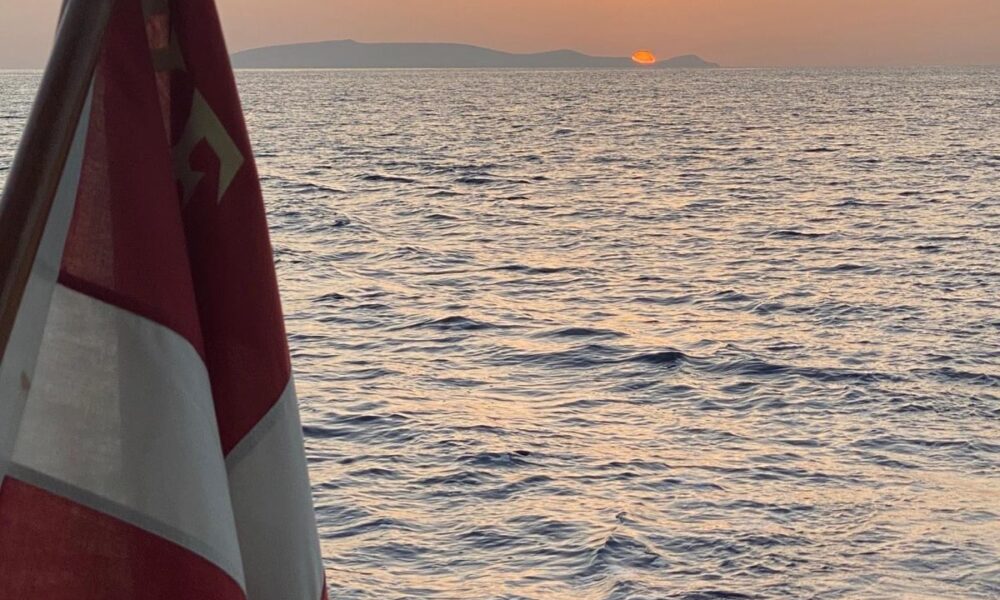
Rat war all night! No thanks.
35° 23’ 3000’’ N, 25° 02’ 5200’’ E
Sailors often seek advice from each other online. As we consider spending a night in a bay on the island of Dhia, north of the main city of Crete, Heraklion, we come across this warning from a British sailor:
“The anchorage is beautiful, and the water is crystal clear. But be careful about spending the night at anchor. The island is infested with rats, and you can hear them screaming all night. Don’t attach a line to the shore, stay far from the coast, and don’t cook food with too much flavor. Rats are excellent swimmers.”
Perhaps this is just a sailor’s tale. There is no quality control even on this part of the internet.
Nevertheless, we choose to sail past Dhia and find another place to drop our anchor for the night.
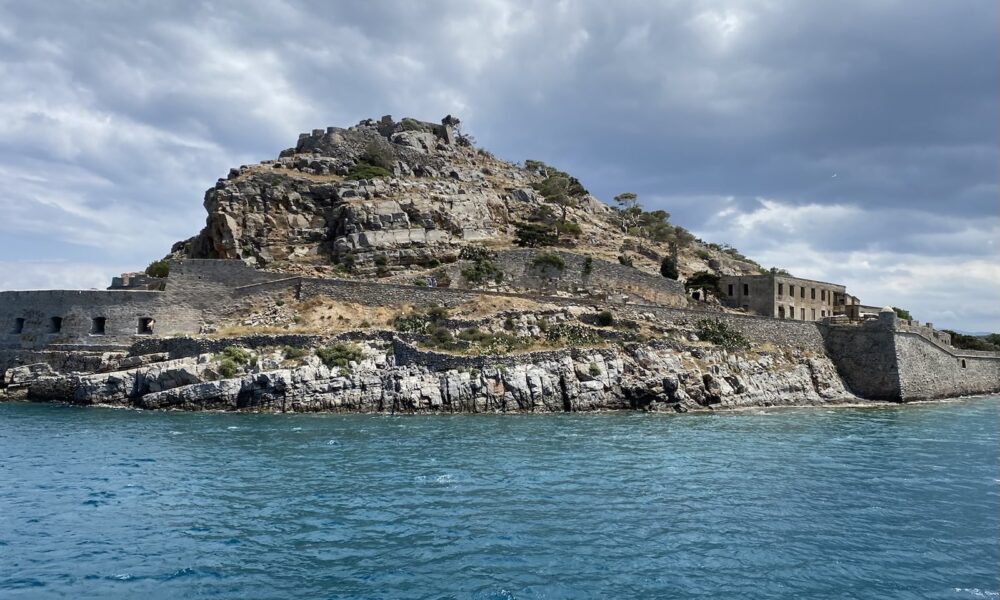
Morning Coffee and Backgammon
35° 11’ 25.0800” N 25° 42’ 55.0700’’ E
Once, Agios Nikolaos was a small fishing village on Crete. Today, like many other fishing villages, it has been discovered by thousands of tourists, including a large number of cruise ship tourists.
Nevertheless, the town has retained its charm. The locals still play a significant role in the town’s atmosphere. Elderly Greek men gather every morning at the local café, where they enjoy their morning coffee and play backgammon with great concentration and perhaps a sip of ouzo.
The old men were sitting there when we left the good ship Ronja in May, and they are still sitting there now as we have returned in September.
Continuing from Agios Nikolaos, we pass by a small rocky island, Spinalonga, which served as a leper colony for 54 years from 1903 to 1957. The Cretan state forced 251 lepers to live on the island. The island had two entrances, one of which was the entrance for the lepers, a tunnel known as “Dante’s Gate.” Upon arrival on the island, the lepers received food, medical treatment, and a pension, which had previously been unattainable for Crete’s lepers, who primarily lived in remote caves, far from society.
Victoria Hislop has written a heart-wrenching novel, “The Island,” about life on Spinalonga during this period.
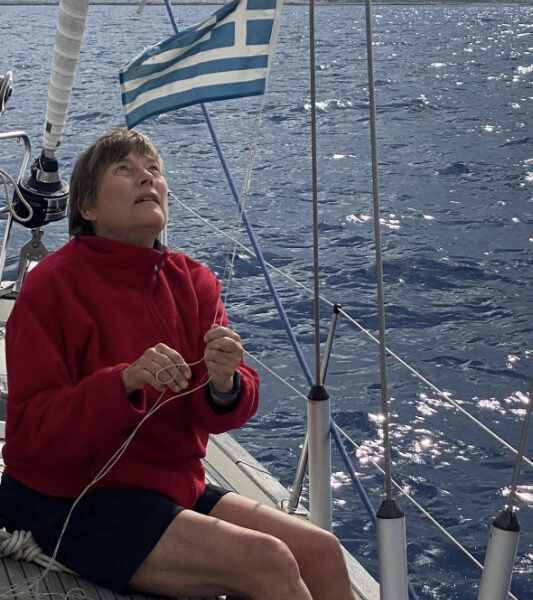
We hoist the Greek flag
36° 26′ 07.0000” N 28° 14′ 52.0000” E
We are “home” in the EU
The Turkish guest flag has been replaced with the Greek guest flag. We are back after a year in Turkey.
It feels good.
First impressions are that the Greeks speak better English, are in higher spirits, and have a more relaxed approach to life.
In Turkey, you moor your boat at the customs pier at an exact agreed-upon time, and from the moment you get your stamp, you are no longer allowed to set foot on Turkish land.
In Greece, it’s more like… well, you can drop by tomorrow, and we’ll take a look at it.
We will miss the Turkish cuisine. It’s miles better than the Greek. When it comes to nature and culture, these two countries are evenly matched.
Ahead of us lie Rhodes, Karpathos, Kasos, Crete, and the Peloponnese, and life is full of possibilities.
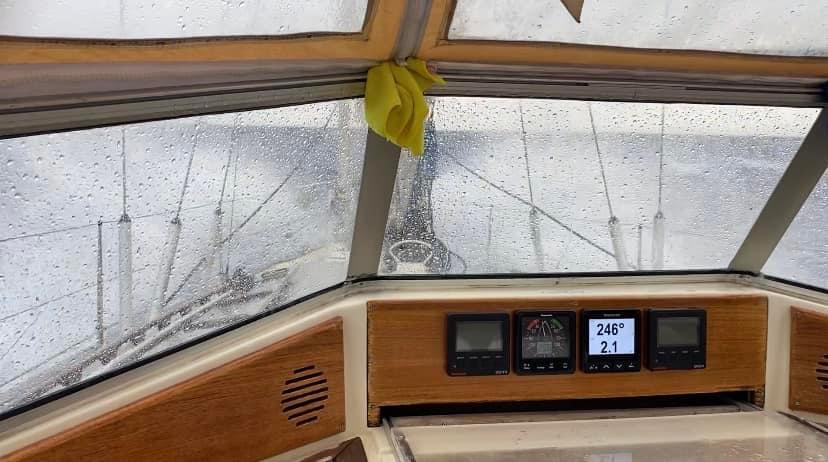
Caught in a sudden storm.
36° 49’ 98.00’’ N, 30° 36’ 37.00” E
It starts with lightning, and then another. Then the wind arrives, howling, almost insane, whipping the sea into foam and creating high – disturbingly high – waves.
Then comes the rain, but mostly, we are preoccupied with the storm, tearing at the rigging and abruptly stopping Ronja’s progress as the bow is lifted high into the air and then hammered down into a wave trough, with water pouring over the deck, and the pitometer dropping from 6.5 to 1.2 knots.
It all happens so quickly that we barely have time to close the hatches. Just a moment ago, the wind gauge showed 0.0, and the wind direction indicator was spinning because it couldn’t find a clear wind direction. And now, the wind gauge shows 20, 30, 40, 50 knots, directly at us.
We are in the midst of a thunderstorm.
What do we do? Should we turn back? Seek shelter in a Turkish cove two nautical miles behind us?
We grit our teeth. Tell each other that this must be a passing storm. After all, the weather forecast promised good weather. Isn’t it also getting a bit brighter – just a little bit – far out to the right?
After an hour, it’s over. First, the wind subsides, then the rain stops, and after a few hours, the waves also calm down.
Ronja regains speed through the water. The rest of us relax.